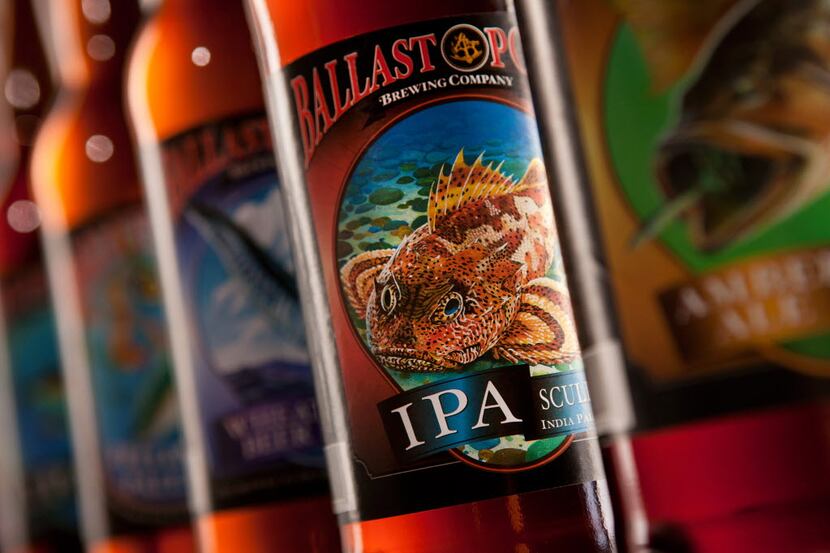The craft beer industry endured a wild ride in 2015. There were high points, like when the number of American craft breweries surpassed the all-time record set in 1873. And year-end data found craft purchases increased nearly 19 percent between 2014 and 2015, drawing more than $2.9 billion, according to research firm IRI.
While many markets trended positively -- Dallas-Fort Worth alone welcomed 14 new craft breweries -- the industry's growth seems to have a reached a tipping point. Big beverage companies, such as Anhueser Busch-InBev and MillerCoors, used large lump sums to get in on the action, purchasing up-and-coming craft operations at exceptional rates and growing their competitive portfolio (to the chagrin of many independent brewers and drinkers).
Alas, craft beer's honeymoon phase appears to be over.
For as many changes the beer industry experienced last year, there are as many more to come. We asked Texas experts Scott Metzger, founder and CEO of Freetail Brewing Co.; Michael Peticolas, founder and brewer of Peticolas Brewing Co.; Tony Drewry, freelance brewery consultant and social media strategist; and Charles Vallhonrat, executive director of Texas Craft Brewers Guild, how they expect some of the biggest issues to play out in 2016.
Craft brewery acquisitions
If there's one thing experts can agree on, it's that big industry players show no signs of stopping craft brewery acquisitions.
Deals brokered in 2015 set a fairly remarkable standard -- there were 24 craft brewery mergers and acquisitions in the U.S., by Brewbound's count -- and came in all shapes and sizes. Heineken International acquired 50 percent share in the reputable Lagunitas Brewing Co. with talks of taking the brand global. While beverage company Constellation Brands jumped into the craft beer segment with the $1 billion purchase of San Diego's Ballast Point Brewing Co.
"We are witnessing the beginning of a very specific and defined strategy for big beer to keep market share and enter into the craft beer segment at the same time," said Peticolas, who expects mergers and acquisitions to "drastically increase" this year.
Part of that strategy takes into account the adage "drink local," said Metzger, formerly a professor of economics at the University of Texas at San Antonio. As companies look for prospects, they recognize "that local is becoming one of the key characteristics in buying habits," he said. "So the big guys (AB-InBev especially) are starting to look at putting together portfolios of regional breweries rather than making one giant craft acquisition."
Whenever news one of these deals reaches the masses, there's always debate about whether or not to stop drinking said brewery's beer. The most recent involved Breckenridge Brewery, which came under AB-InBev's umbrella on Dec. 22. The fear is that a soulless, money-hungry corporation will change the product.
But Drewry contends that these buys shouldn't come as a surprise -- they were inevitable. In fact, he believes the notion of craft beer is bound for change.
"Once beer became a business so many years ago, it was only ever going to eventually get to this point where this ideal of what small batch beer means to us was challenged by the almighty dollar," he said. "It's not the end of beer as we know it, but the beginning of a movement back to what beer has always been ... made in small batches, with local ingredients, served fresh and very near where it was made."

The Megabrew
One of the brewery mergers to make headlines in 2015 was between SABMiller and AB-InBev. The $107 billion deal, deemed the Megabrew, would make it the largest in the industry's history.
How exactly does this effect American beer drinkers? Not much, yet.
The merger is an international play to strengthen one company's foothold on beer across the globe, said Metzger. In fact, AB-InBev would divest all of SABMillers' U.S. assets as part of the deal, if it is approved. What concerns Vallhonrat of the Texas Craft Brewers Guild is how the deal may eventually restrict consumer choice.
When any single player has such large market share, regulators "have to ensure competitors have access to raw ingredients, suppliers, distribution, and routes to market," Vallhonrat said. "When any of these areas are overwhelmed or artificially constrained because of a single player's buying power, it means less competition and restricted consumer choice."
How many calories in that beer?
By Dec. 1, all restaurant chains with more than 20 locations nationwide will be required to offer nutritional information for all foods and beverages sold, including beer, according to a new rules from the Food and Drug Administration.
This regulation bodes well for consumers who will now receive "clear and consistent" nutritional information, said Vallhonrat. But it could turn the taps in favor of big brewers, since it's the brewery's job to pay for nutritional analysis of its products, which can often be expensive, said Metzger.
"If the hurdle is set too high, then the result will be that small breweries get excluded from restaurant chains," Metzger said. "If you are a very large brewery, this is great, as it basically eliminates the competition in a very significant segment of the on-premise beer market."
The FDA is considering using generic guidelines for each style rather than a specific beer; for example, using information for a standard IPA as opposed to Lakewood Brewing Co.'s Hop Trapp. But they have yet to decide, said Metzger.
Will publishing beers' nutritional information deter some drinkers? Our experts say likely not. After all, craft beer is not known as a diet beverage, said Metzger.

